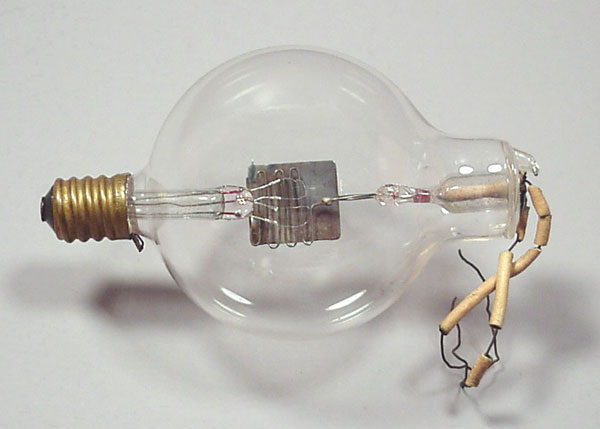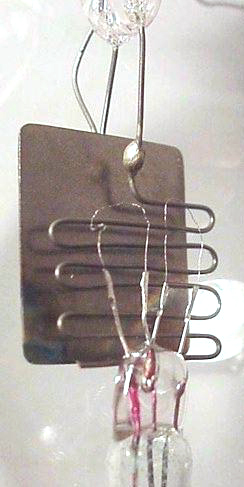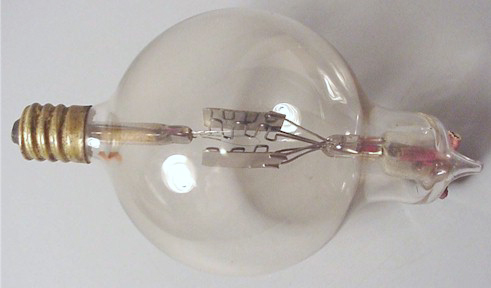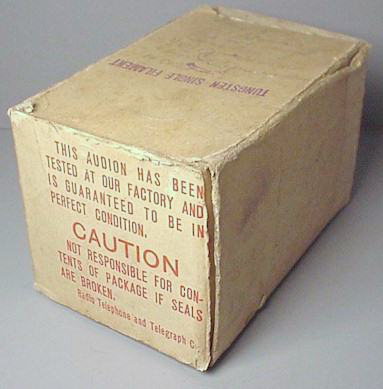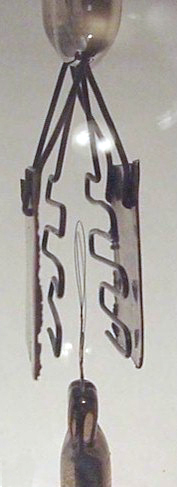|
|
||
|
DeForest Single Wing Audion c.1912 Tantalum Filaments |
||
| In 1906, Lee DeForest added the grid element to
the Fleming Valve and
created the triode vacuum tube, which he called the
"Audion". It was the first purely electronic component
that could amplify a signal and with it's invention, radio, television,
and a host of other technologies became possible. He was issued US patent number 879,532 on February 18, 1908 for this invention. |
||
| The earliest Audions had a single grid and
plate (single wing); later ones had two grids and plates (double
wing). In most bulbs, two filaments were provided so that the second
could be used when the first one burned out. In some later bulbs
intended for amplifier use, both filaments were used simultaneously for
greater output.
Earlier Audions used tantalum filaments; later ones used tungsten. The tantalum filament was not stable. It tended to warp in use, and often shorted to the grid. This warpage can be seen clearly in the photos. DeForest, ironically, had very little understanding of what made the Audion work and, more importantly, what made it work well. They were crudely made, and no two were exactly the same. They were expensive, unstable, difficult to use, and did not last long, but for a time, there was nothing better. As important as this invention was, it was not until the technology was licensed to major corporations (most notably Western Electric) that the Audion was developed into a truly practical device. |
|
